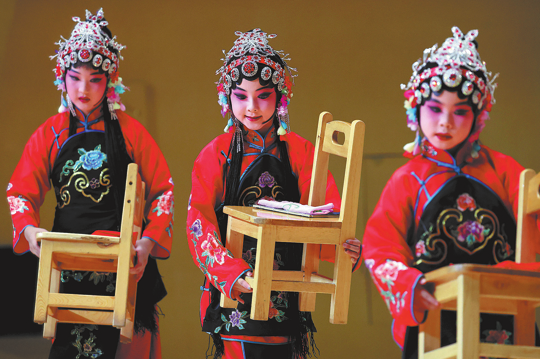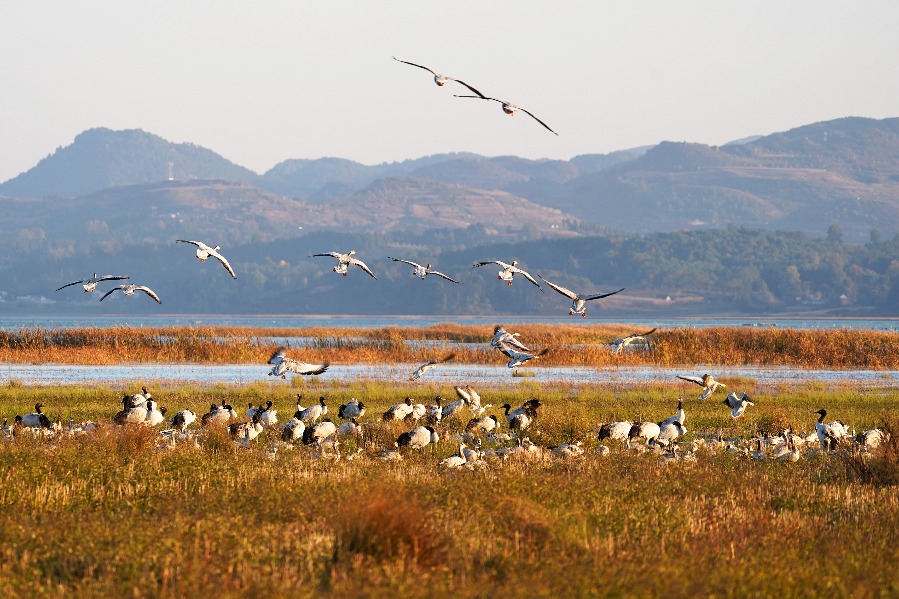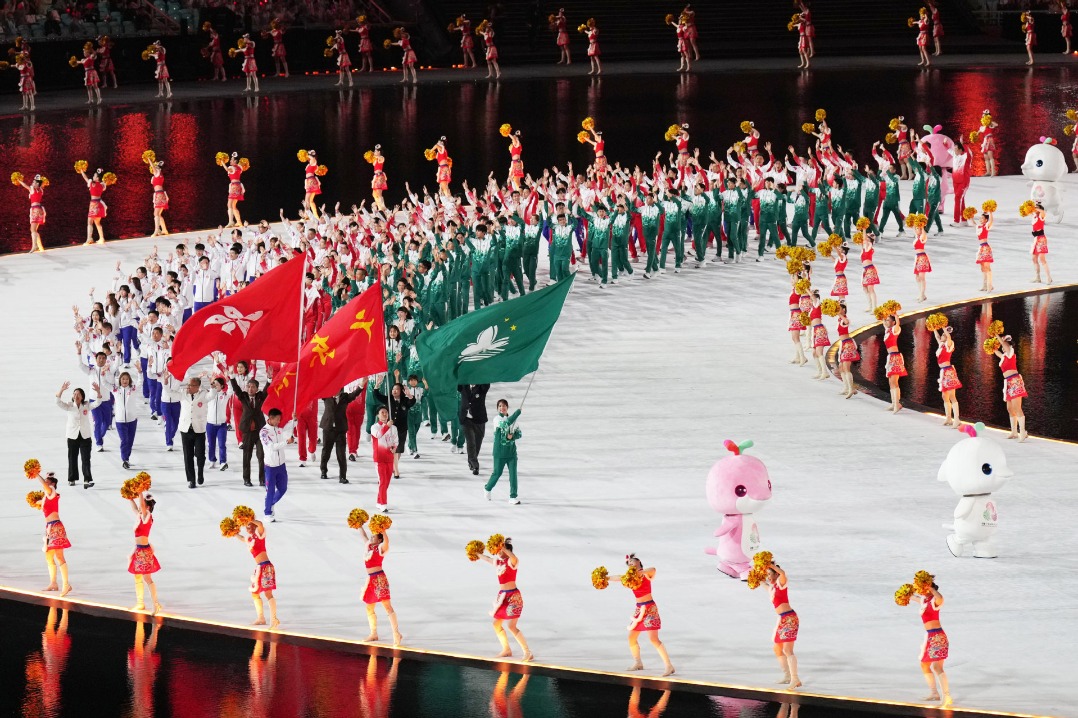Artificial nests boost biodiversity of 'China's water tower'

XINING -- Under the blue skies and white clouds of the Sanjiangyuan area in Northwest China's Qinghai province, raptors like golden eagles and upland buzzards soar through the air, frequently returning to nests perched atop electricity transmission poles and towers. There, they incubate their eggs and feed their young.
Surprisingly, these nests were installed by local power grid workers in a public welfare initiative that the State Grid Corporation of China (State Grid) launched in the province in 2016 to promote biodiversity conservation.
The artificial nest project is now being expanded across China and globally, and has been selected as a flagship case for the 16th meeting of the Conference of the Parties to the UN Convention on Biological Diversity (CBD COP16).
CONFLICTS
The Sanjiangyuan area, known as "China's water tower," is home to the headwaters of the Yangtze, Yellow and Lancang rivers, and boasts among the highest levels of high-altitude biodiversity in the world.
The area now hosts approximately 300 bird species, including over 20 raptors, such as golden eagles, saker falcons and upland buzzards. These birds, which favor high nesting sites, use the soaring transmission towers -- tens of meters in height -- as ideal habitats.
In the past, birds frequently built nests on transmission towers using materials like iron wires and thin ropes, which often electrocuted the birds and triggered power outages.
To resolve the conflict between power grid development and avian habitat conservation, which had long been recognized as an industry-wide challenge, maintenance workers from the State Grid Qinghai Electric Power Company initially installed bird deterrent and exclusion devices on power towers. However, over time, the birds became habituated to these devices and grew unafraid.
"We even tried relocating nests, but the area's high altitude and scarce tree coverage leave few suitable nesting sites for raptors," said Wang Hui, former head of the maintenance team.
COEXISTENCE
According to the Yushu Power Supply Company, which is under the State Grid Qinghai Electric Power Company, 40 percent of power failures in the province's Yushu Tibetan Autonomous Prefecture in 2015 were bird-related. Each repair mission required crews to traverse snow-capped mountains and vast grasslands, covering hundreds of kilometers at tremendous operational costs.
To solve the problem, Wang and his colleagues devised the idea of building nests for birds on the towers, at positions that wouldn't affect power transmission safety. Soon, the first batch of simple artificial bird nests -- bamboo baskets lined with straw -- were installed and put to use.
"At first, the results were promising -- eagles and other large birds gradually moved in," maintenance worker Ren Liang said. However, frequent sandstorms in Qinghai blew away the straw in the bamboo baskets, and the baskets themselves quickly weathered and fell apart.
After repeated trials and improvements, the workers switched to weaving nests from rattan and lining them with coir mats secured by metal fasteners. "These upgraded nests were not only sturdier and safer, but also more comfortable for hatching chicks," Ren said.
Working with wildlife experts, the power company ultimately designed bowl-shaped nests measuring about 100 centimeters in diameter and 40 centimeters in depth, specifically sized for the physical requirements of the area's raptors.
These conservation efforts have yielded significant results. Since 2016, the State Grid Qinghai Electric Power Company has installed 5,053 artificial bird nests in the Sanjiangyuan area, successfully attracting birds to nest in more than 2,600 of that total.
The company now says it will install new nests while optimizing existing sites this year. This optimization will include relocating long-unoccupied nests to areas with higher concentrations of birds, thereby enhancing both utilization efficiency and the scientific deployment of these conservation structures.
Wang Jianting, president of the Bird Watching Association of Qinghai National Park, noted that these artificial nests have successfully attracted raptors that prey on plateau pikas and other small animals, strengthening vulnerable links in Sanjiangyuan's ecological chain.
Professional monitoring results show that according to current artificial nest installation standards in Sanjiangyuan, each nest assists in the predation of about 50 small grassland rodents in the surrounding area during the raptor breeding season alone, significantly enhancing ecological balance stability.
In recent years, the State Grid Qinghai Electric Power Company has also collaborated with non-profit organizations on interdisciplinary research integrating ornithology and power grid systems, dynamically monitoring and evaluating the artificial nest project.
The project has been expanded to provinces and regions such as Inner Mongolia, Sichuan, Gansu, Ningxia, Xinjiang and Xizang.
- Safeguarding life on the Roof of the World
- Education innovation expo bolsters intl exchange in GBA
- China's State Council appoints, removes officials
- Chinese, Vietnamese navies conclude joint patrol in Beibu Gulf
- Co-hosting Games enriches 'one country, two systems'
- China's top court highlights domestic violence cases to raise awareness




































